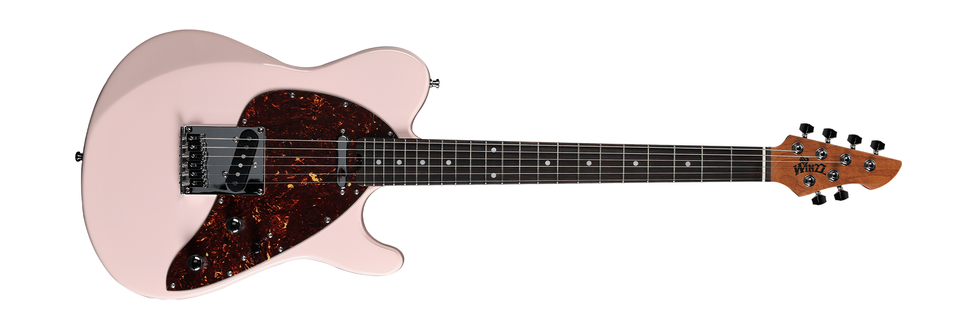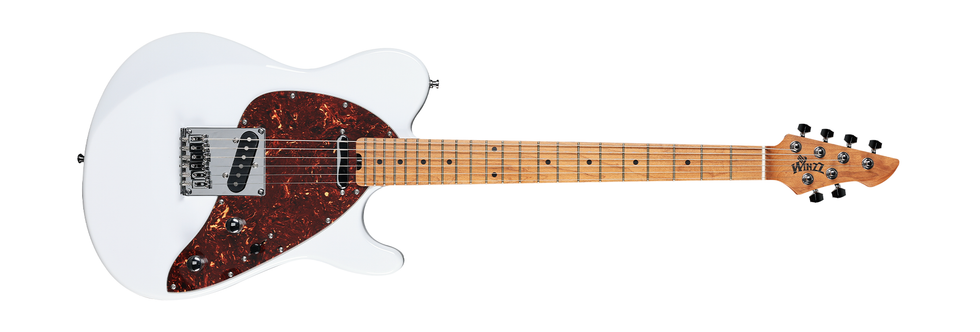In my mind, appraisers have one of the toughest jobs, as they have to be extremely precise in their work. If they appraise too low, the owner can become offended; if they appraise too high, disappointment can set in when those values aren’t met.
The problem with evaluations is that they are entirely subjective – after all, who really decides what something is worth? If you remember the television show Full House, there was an episode where Danny Tanner has a yard sale to get rid of his clutter but he doesn’t sell anything because everything is so ridiculously overpriced. Deep down, Danny didn’t want to part with anything; therefore he priced things so high that nobody would bite.
My job is to price things accurately, but fairly at the same time. In these final two installments (one month’s space was not enough to properly cover all of this) of identifying, dating, and evaluating your guitar, I’m going to show you how to put a price on your gear and ultimately determine if it is trash or treasure.
The First Place to Start
If you’re looking to determine a price for a guitar or amp, you’ll want to begin with the Blue Books, of course! This is more than just a shameless plug – our books are extremely thorough and helpful. Our three current books – seperately covering acoustic guitars, electric guitars and amplifiers – each have over 2,200 pages, cover hundreds of popular and not-so-popular makes and manufacturers, and include pictures to help in identification.
Although the Blue Books are extremely comprehensive, not every guitar in the universe is included (if every guitar was in there, you’d kill about 15 trees just to print one copy!). If your guitar isn’t listed in our books or you don’t know what it is, that doesn’t mean it is not worth anything (refer to “Trash or Treasure” in the May and June issues). For instance, Brazilian rosewood was used on many acoustic instruments before most companies stopped using it in the late 1960s, and this wood is quite valuable. Regardless of the make or model, a guitar with this wood will command a premium.
| Unfortunately, you can’t establish a basis for value on one sold item; however, if the trend continues, that’s another story. |
Establishing Value/Collectibility
There are many factors that go into a guitar’s collectability – I believe it all starts with the basis tenet of economics: supply and demand. Naturally, when a guitar is in high demand it will draw more dollars; likewise, when a market is saturated with a certain model, you will see many discounts before it sells. Early models of popular brands (Stratocasters, Telecasters, Les Pauls, P-Basses, etc.) are extremely collectible because of their dominance in design ever since. Then again, what makes a Les Paul Standard between 1958 and 1960 the most valuable standard production non-artist guitar? That, I’m afraid, is another question for another day.
Beware of Auction Sites
I’d be lying if I said eBay wasn’t changing the way most of us buy and sell today. However, too many people are taking advantage of a good system in trying to make a quick buck or by screwing people over. Granted, not everyone on eBay is a bad person, but many of you can attest that there are plenty of people with bad intentions visiting that site.
If a value is high or low in our books I often hear, “Well, it sold for X amount on eBay.” Unfortunately, you can’t establish a basis for value on one sold item; however, if the trend continues, that’s another story.
Large auctions such as Bonham’s and Sotheby’s typically sell large collections or items owned by famous personalities. For instance, a 1958 or 1959 Gibson Explorer with a Bigsby tailpiece sold for $611,000 by Skinner, Inc. at auction. We have Explorers from this era listed between $150,000 and $175,000, so what caused this one example to sell for three times our listed value? Again, this is another question for another day, but I guarantee you, whoever bought that guitar will have a tough time making a profit on it. Just because you see a certain guitar sell for an extremely high price at auction does not make it the norm. Next month, I will finish my series on evaluating your guitar. In the meantime, I encourage you to write me with any further questions/ comments.
Zachary R. Fjestad
Zachary R. Fjestad is the author of the Blue Book of Acoustic Guitars, Blue Book of Electric Guitars, and the Blue Book of Guitar Amplifiers.
Guitar Trash or Treasure Questions can be submitted to:
Blue Book Publications
Attn: Guitar Trash or Treasure
8009 34th Ave. S. Ste #175
Minneapolis, MN 55425
800-877-4867
www.bluebookinc.com
guitars@bluebookinc.com
Please include pictures of your guitars.












![Rig Rundown: Russian Circles’ Mike Sullivan [2025]](https://www.premierguitar.com/media-library/youtube.jpg?id=62303631&width=1245&height=700&quality=70&coordinates=0%2C0%2C0%2C0)








